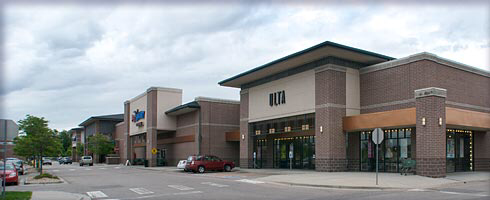Redevelopment of the former University Hills Mall into a grocery store-anchored neighborhood shopping center.
The University Hills Shopping Center was constructed in 1953 as a strip shopping center with a specialty grocery store. In 1953, the May Company purchased nine acres and constructed a three-level department store of approximately 190,000 square feet, attracting additional retail tenants. In 1975 the open exterior shopping center was covered.
In November 1983, a large fire consumed more than 40 percent of the shopping center. The center was rebuilt and reopened in August 1984. Historically, the center performed well; the May D & F store located there was one of the most successful locations in the metro area. However, due to shifting demographics and the rise of suburban shopping centers, May D & F closed this location in 1990. Prior to the closure, occupancy was high at the center.
Redevelopment efforts following the closure of May D & F were stymied by fragmented ownership (May Centers, Inc. and University Hills, Inc.), the perceived lack of retail viability on this stretch of Colorado Boulevard (south of Interstate 25), and high costs associated with relocating utilities at the site, asbestos remediation, and demolition. The lack of redevelopment resulted in high vacancy levels and deteriorated buildings and infrastructure. Furthermore, area residents were impacted by declining property values and a decrease in retail opportunities.
In February 1995, University Hills, Inc. acquired the land owned by May Centers, Inc. In July 1996, the property was acquired by Gold UH, LLC, a joint venture between local real estate firm Goldberg Property Associates and Greystone Realty Corporation (the real estate arm of New York Life). Phase 1 was delivered in October 1997, and Phase 2 was delivered in October 2001.
Through the significant efforts of the City and County of Denver, City Council, several neighborhood groups (University Hills Neighborhood Association, Southern Hills Neighborhood Association, Wilshire Neighborhood Association, Warren Neighborhood Association, and the Presidents Forum), the redeveloper and DURA, this redevelopment reactivated a deteriorated and important retail center along a major thoroughfare. Additionally, it provides basic services and neighborhood shopping opportunities that are convenient to people’s homes.
